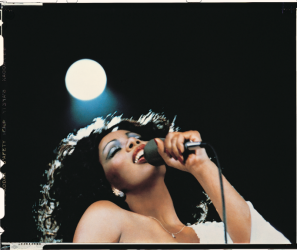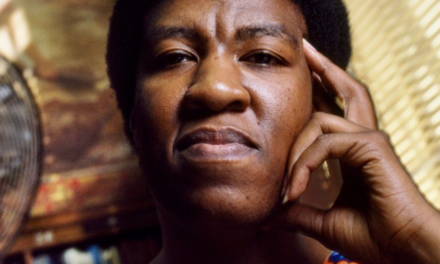
By Danny R. Johnson – Entertainment News Editor
Tina Turner, the earthshaking singer whose rasping vocals, sexual magnetism, and explosive energy made her an unforgettable live performer and one of the most successful recording artists of all time, died on Wednesday, May 24, at her home in Küsnacht, Switzerland, near Zurich. She was 83.
Her publicist Bernard Doherty announced the death in a statement but did not provide the cause. She had a stroke in recent years and was known to be struggling with kidney disease and other illnesses.
While attending high school, Ms. Turner began her half-century career in the late 1950s when she began singing with Ike Turner and his band, the Kings of Rhythm. At first, she was only an occasional performer, but she soon became the group’s star attraction — and Mr. Turner’s wife. Her powerful, bluesy voice and frenetic dancing style made an instant impression.
Their ensemble, soon renamed the Ike and Tina Turner Revue, became a premier touring soul act in Black venues on the so-called chitlin’ circuit. After the Rolling Stones invited the group to open for them, first on a British tour in 1966 and then on an American time in 1969, white listeners in both countries began paying attention.
Ms. Turner, who insisted on adding rock songs by the Beatles and the Stones to her repertoire, reached an enormous new audience, giving the Ike and Tina Turner Revue its first Top 10 hit with her version of the Creedence Clearwater Revival song “Proud Mary” in 1971 and a Grammy Award for best R&B vocal performance by a group.
“In the context of today’s show business, Tina Turner must be the most sensational professional onstage,” Ralph J. Gleason, the influential jazz and pop critic for The San Francisco Chronicle, wrote in a review of a Rolling Stones concert in Oakland in November 1969. “She comes on like a hurricane. She dances, twists, shakes sings, and the impact is immediate and total.”
But if the Ike and Tina Turner Revue was successful, the Ike and Tina Turner marriage was not. Mr. Turner was abusive. After she escaped the wedding in her 30s, her career faltered. But her solo album “Private Dancer,” released in 1984, returned her to the spotlight — and lifted her into the pop stratosphere.

Working with younger songwriters and backed by a smooth, synthesized sound that provided a lustrous wrapping for her raw, urgent vocals, she delivered three mammoth hits: the title song, written by Mark Knopfler of Dire Straits; “Better Be Good to Me”; and “What’s Love Got to Do With It.”
Tina Turner was born Anna Mae Bullock on Nov. 26, 1939, in Brownsville, Tenn., northeast of Memphis. She spent her earliest years on the Poindexter farm in Nutbush, an unincorporated area nearby, where she sang in the Spring Hill Baptist Church choir.
Her father, Floyd, known by his middle name, Richard, worked as the farm’s overseer — “We were well-to-do farmers,” Ms. Turner told Rolling Stone in 1986 — and had a complicated relationship with his wife, Zelma (Currie) Bullock.
Her parents left Anna and her older sister, Alline, with relatives when they went to work at a military installation in Knoxville during World War II. The family reunited after the war, but Zelma left her husband a few years later, and Anna lived with her grandmother in Brownsville.
After rejoining her mother in St. Louis, she attended Sumner High School there. She and Alline began frequenting the Manhattan Club in East St. Louis, Ill., to hear Ike Turner and the Kings of Rhythm.
“I wanted to get up there and sing sooooo bad,” Ms. Turner recalled in “I, Tina: My Life Story” (1986), written with Kurt Loder. “But that took an entire year.”
One night, during one of the band’s breaks, the drummer, Eugene Washington, handed her the microphone, and she began singing the B.B. King song “You Know I Love You,” which Mr. Turner had produced. “When Ike heard me, he said, ‘My God!'” she told People magazine in 1981. “He couldn’t believe that voice coming out of this frail little body.”
In his book “Takin’ Back My Name: The Confessions of Ike Turner” (1999), written with Nigel Cawthorne, Mr. Turner wrote: “I’d be writing songs with Little Richard in mind, but I didn’t have no Little Richard to sing them, so Tina was my Little Richard. Listen closely to Tina, and who do you hear? Little Richard singing in the female voice.”
Mr. Turner used her as a backup singer, billed as Little Ann, on his 1958 record “Boxtop.” When Art Lassiter, the group’s lead singer, failed to show up for the recording of “A Fool in Love,” she stepped in. The record hit No. 2 on the Billboard R&B chart and No. 27 on the pop chart.
Mr. Turner gave his protégée —now also his romantic partner — a new name, Tina, inspired by the television character Sheena, Queen of the Jungle. And he renamed the group Ike and Tina Turner Revue.
It was a dynamic, disciplined ensemble second only to the James Brown Revue, but until “Proud Mary,” it never achieved significant crossover success. Up to that point, it had only one single in the pop Top 20 in the United States, “It’s Gonna Work Out Fine” in 1961. The group did generate several hits on the R&B charts, notably “I Idolize You,” “It’s Gonna Work Out Fine,” and “Tra La La La La,” but most of its income came from a relentless touring schedule.
Ms. Turner’s relationship with Mr. Turner, whom she married in 1962 on a quick trip to Tijuana, Mexico, was turbulent. He was dictatorial, violent at times, and, in the 1970s, hopelessly addicted to cocaine. She left him in 1976, with 36 cents and a Mobil gasoline card in her pocket, and divorced him two years later. He died of a cocaine overdose in 2007.
“When I left, I was living a life of death,” she told People in 1981. “I didn’t exist. I didn’t fear him killing me when I left because I was already dead. When I walked out, I didn’t look back.”
Her marriage provided much of the material for the 1993 film “What’s Love Got to Do with It,” with Angela Bassett and Laurence Fishburne in the lead roles. Ms. Turner re-recorded some of her hits and a new song, “I Don’t Wanna Fight,” for the film but declined to participate. “Why would I want to see Ike Turner beat me up again?” she said.
A Second Career In 1966, the record producer Phil Spector, after hearing the Ike and Tina Turner Revue at the Galaxy Club in Los Angeles, offered $20,000 to produce their next song so that Mr. Turner would stay away from the studio. The result, “River Deep, Mountain High,” is often regarded as the high-water mark of Mr. Spector’s patented “wall of sound.” It failed in the United States, barely reaching the Top 100, but it was a big hit in Britain, where it marked the beginning of a second career for Ms. Turner.
“I loved that song,” she wrote in her 1986 memoir. “Because for the first time in my life, it wasn’t just R&B — it had structure and a melody.” She added: “I was a singer, and I knew I could do other things; I just never got the opportunity. ‘River Deep’ showed people what I had in me.”
After she walked out on her marriage, burdened with debt, Ms. Turner struggled to build a solo career, appearing in ill-conceived cabaret acts, before signing with Roger Davies, the manager of Olivia Newton-John, in 1979. Guided by Mr. Davies, she returned to the gritty, hard-rocking style that had made her a crossover star and would propel her through the coming decades as one of the most durable performers on the concert stage.









